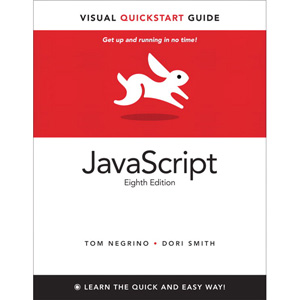Jump Start HTML5

This short book provides a practical introduction to HTML5. HTML (HyperText Markup Language) is the predominant language of web pages. Originally developed as a way to describe and share scientific papers, HTML is now used to mark up all sorts of documents and create visual interfaces for browser-based software.
With HTML5, however, HTML has become as much an of API for developing browser-based software as it is a markup language. In this book, we’ll talk about the history of HTML and HTML5 and explore its new features.
It covers:
- HTML5 basics
- Multimedia
- Canvas and SVG
- HTML5 applications
- HTML5 APIs
HTML5 is required knowledge for every professional web designer and developer. This book will quickly get you up to speed with the fundamentals of HTML5 and give you the confidence to start experimenting on your own.
Table of Contents
Chapter 1. Basics: What is HTML5?
Chapter 2. Basics: The Anatomy of HTML5
Chapter 3. Basics: Structuring Documents
Chapter 4. Basics: HTML5 Forms
Chapter 5. Basics: Multimedia, Audio and Video
Chapter 6. Multimedia: Preparing Your Media
Chapter 7. Multimedia: Using Native HTML5 Audio
Chapter 8. Multimedia: Using Native HTML5 Video
Chapter 9. Multimedia: The source Element
Chapter 10. Mutimedia: The track Element
Chapter 11. Multimedia: Scripting Media Players
Chapter 12. Canvas & SVG: An Introduction to Canvas
Chapter 13. Canvas & SVG: Canvas Basics
Chapter 14. Canvas & SVG: Handling Non-supporting Browsers
Chapter 15. Canvas & SVG: Canvas Gradients
Chapter 16. Canvas & SVG: Canvas Images and Videos
Chapter 17. Canvas & SVG: An Introduction to SVG
Chapter 18. Canvas & SVG: Using SVG
Chapter 19. Canvas & SVG: SVG Bézier Curves
Chapter 20. Canvas & SVG: SVG Filter Effects
Chapter 21. Canvas & SVG: Canvas or SVG?
Chapter 22. Offline Apps: Detecting When the User Is Connected
Chapter 23. Offline Apps: Application Cache
Chapter 24. Offline Apps: Web Storage
Chapter 25. Offline Apps: Storing Data With Client-side Databases
Chapter 26. APIs: Overview
Chapter 27. APIs: Web Workers
Chapter 28. APIs: The Geolocation API
Chapter 29. APIs: Server Sent Events
Chapter 30. APIs: The WebSocket API
Chapter 31. APIs: The Cross-document Messaging API
Book Details
- Paperback: 250 pages
- Publisher: SitePoint (February 2014)
- Language: English
- ISBN-10: 0980285828
- ISBN-13: 978-0980285826














